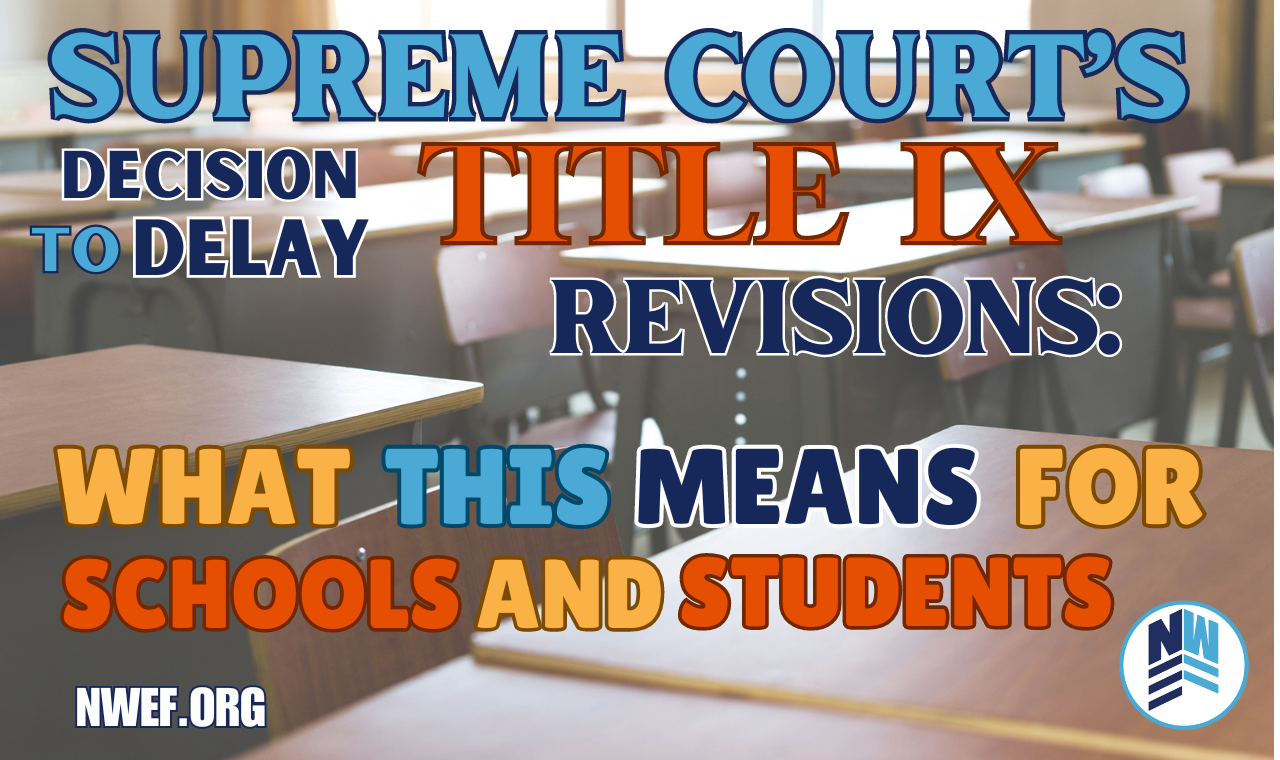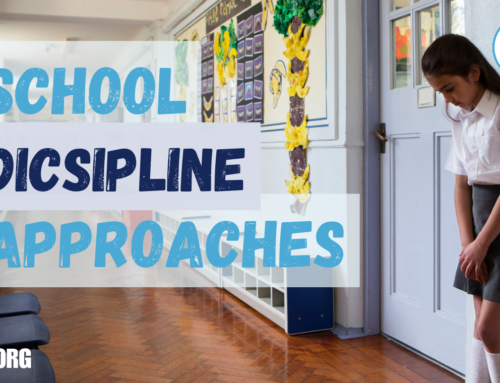
The heat surrounding Title IX revisions isn’t dying down anytime soon. On August 1, 2024, President Biden’s proposed Title IX changes went into effect throughout the country — only to be blocked by half the United States. This was appealed by the Justice Department but ultimately upheld in an emergency decision by the Supreme Court and sent back to the lower courts.
Women’s sports, locker rooms, gender identity — these phrases stir up a lot of emotions. After all, they’re the buzzwords in every other headline. They remind us of the controversies that have plagued schools and politics constantly over the past four years.
One infamous example is the Lia Thomas incident — Lia is a biological male who won the trophy after tying for first place in a swimming match with a biological woman, Riley Gaines. Even more devastating was the sexual assault case in Loudoun County when a young girl was raped in a bathroom by a transgender student. More recently, the 2024 Olympics got some attention for allowing two people with Y chromosomes to compete in boxing matches against women.
The next few months are critical. Will the courts strike down the Title IX changes? Will the decision go back to the Supreme Court? How will this affect students, teachers, and parents?
What’s Title IX?
At its core, Title IX is a civil rights law. It simply protects people from sex discrimination in federally funded education. For example, you can’t be denied access to a classroom just because you’re a woman or a man.
In the words of Title IX itself, “No person in the United States shall, on the basis of sex, be excluded from participation in, be denied the benefits of, or be subjected to discrimination under any education program or activity receiving Federal financial assistance.”
“On the basis of sex.” This phrase is where all the contemporary disputes are focused. Originally, Title IX was viewed as a landmark win for women and girls, because it gave them full access to public schooling and freed them to play sports at all levels of education. In 1972, when Title IX was passed in conjunction with several other Education Amendments, women were the main beneficiaries.
Unfortunately, the changes Biden wants to make—which would modify the basic understanding of the amendment—may withdraw some of the freedoms women gained in 1972.
Biden’s Proposed Changes to Title IX
What are those changes? Great question.
A few amendments are included in the rewrite of Title IX, some more contested than others. These are:
- No discrimination based on gender identity, sex stereotypes, and sex characteristics
- No discrimination based on sexual orientation
- No discrimination for pregnant and nursing women and teens
- The inclusion of nursing facilities for mothers in schools
It’s worth noting here that the courts that blocked Title IX in August did not have any dispute with the last two changes on that list. Non-discrimination policies and resources for pregnant and nursing students have been well-received on both sides of the political aisle. Keep that in mind, because it’s the key to understanding why the Supreme Court stepped in and made headlines with their decision to allow states to block the revisions.
Blocked: What Happened When the Title IX Revisions Went into Effect?
On August 1, 2024, Biden’s Title IX changes were a go. Immediately, twenty-six states—many Republican-led—appealed it. This effectively blocked the rules from going into effect. However, the remaining twenty-four states—including New York, California, and other “blue” states—allowed the changes and did not appeal.
This doesn’t mean the changes couldn’t eventually be repealed in those states, especially if the Supreme Court weighs in again. But for now, the revisions remain in place.
But what happened in those twenty-six states that blocked the changes? First, the states had to file lawsuits to block the changes so they could buy time to challenge the constitutionality of the changes. This was accomplished and the case went to the federal appeals courts.
However, the Department of Justice wasn’t happy. Here’s where the Supreme Court comes in.
The Supreme Court’s Decision
Now we’re going to get a little technical. Remember those revisions about pregnant and nursing students? The Justice Department wanted to force those non-controversial revisions to take effect in the twenty-six states blocking the changes. They appealed to the Supreme Court to get an emergency decision.
And the Supreme Court delivered. In their decision, they said, “…the Government has not provided this Court a sufficient basis to disturb the lower courts’ interim conclusions that the three provisions found likely to be unlawful are intertwined with and affect other provisions of the rule.”
In plain language, the bill was written in such a way as to prevent the pregnant/nursing clause from being interpreted independent of the gender identity and sexual orientation clause. Because of this, it would be a mistake to only take bits and pieces from the revisions and implement them. You have to look at the bill as a whole.
So the changes remained blocked.
What’s next
With their decision, the Supreme Court batted the issue back to the lower courts where they will continue to hammer out a decision.
Of course, there’s a good chance that the case will return to the Supreme Court in the coming months. If so, SCOTUS will be expected to make a final decision on whether the changes are Constitutional.
So now we wait.
If Ratified, How Would Title IX Impact Schools and Students?
Judging from all the headlines and all the talk surrounding Title IX’s new rewrite, it’s safe to say it’s been extremely controversial. Ever since the Biden administration proposed it, Americans have been eagerly waiting or dreading the day when it finally went into effect.
As parents, teachers, and educators, this rewrite directly impacts you and your children or students. But in what ways?
Title IX, if permanently altered, would give biological males access to girl’s bathrooms and vice versa. As we’ve seen in the Loudoun County case, this may result in more biological males, identifying as females, harassing or assaulting young girls. After all, if they have access to the girl’s bathroom, they also have access to the girls themselves.
It would mandate pronouns in schools, give transgender students access to opposite-sex locker rooms, and force girls to undress in front of biological males. It also would give biological males the right to join female sports teams. With their elevated levels of testosterone, greater muscle mass, etc, biological males have the advantage over biological females in sports, which can result in girls missing out on victories, scholarships, and other opportunities, as evidenced in this year’s summer Olympics. It is also worth noting that LGBTQ+ books would be more accessible in school libraries.
Not only that, says Moms For Liberty, but these revisions would create challenges for anyone wanting to speak out about these issues. For example, if a girl reveals she is uncomfortable undressing in front of a transgender student, or if a teacher declines to use a student’s pronouns for religious reasons, under Title IX’s rewrite these people “can be punished for harassment,” Moms For Liberty points out.
The Controversy Continues
Moms For Liberty has been in the thick of the fight and even brought a federal lawsuit that helped block the revisions. Co-founders Tiffany Justice and Tina Descovich said, “Gender ideology does not belong in public schools and we are glad the courts made the correct call to support parental rights. We will always stand up for the rights of parents and the protection of children. All parents must have their voices heard and their right to raise their own children is part of the very fabric of a free America.”
According to EducationWeek, Kimberly S. Hermann, one of Moms For Liberty’s legal team, said, “We don’t want to stop Title IX. We want to save Title IX. We want to stop the changes to the regulations.”
But many have a different view. “Today’s rule will be life-changing for so many LGBTQ+ youth,” Human Rights Campaign president Kelley Robinson said, “and help ensure LGBTQ+ students can receive the same educational experience as their peers: going to dances, safely using the restroom, and writing stories that tell the truth about their own lives.”
Oregon Congresswoman Suzanne Bonamici agrees: “Students, advocates, and policymakers have worked together for years to reverse the weakening of Title IX under the Trump administration’s anti-public education agenda, which put students at risk of discrimination, harassment, and assault…These new regulations will provide greater protections for all students, regardless of their sexual orientation or gender identity, so they have equal access to educational opportunities.”
What do you think? Do these changes create a safer environment for our children? Or are parental rights at risk?
Keeping Girls Safe in School and Sports
Sex reaches beyond gender identity to the roots of who a person is—and how we relate to each other. There is a natural difference between males and females that our institutions must uphold for the safety and good of the whole. Whatever our personal feelings are, it’s clear the government must acknowledge biological sex in some way. If Title IX’s recent revisions are ratified, our government’s definition of sex will be radically altered, for better or worse.
Parents and teachers, it’s important to stand up, in any way you can, to give a voice to and protect the children under your care. Gender ideology will get a better foothold in our schools if the Supreme Court does not stop the new Title IX regulations. Is this what’s best for our kids?





This was a valuable read, thanks for taking the time.